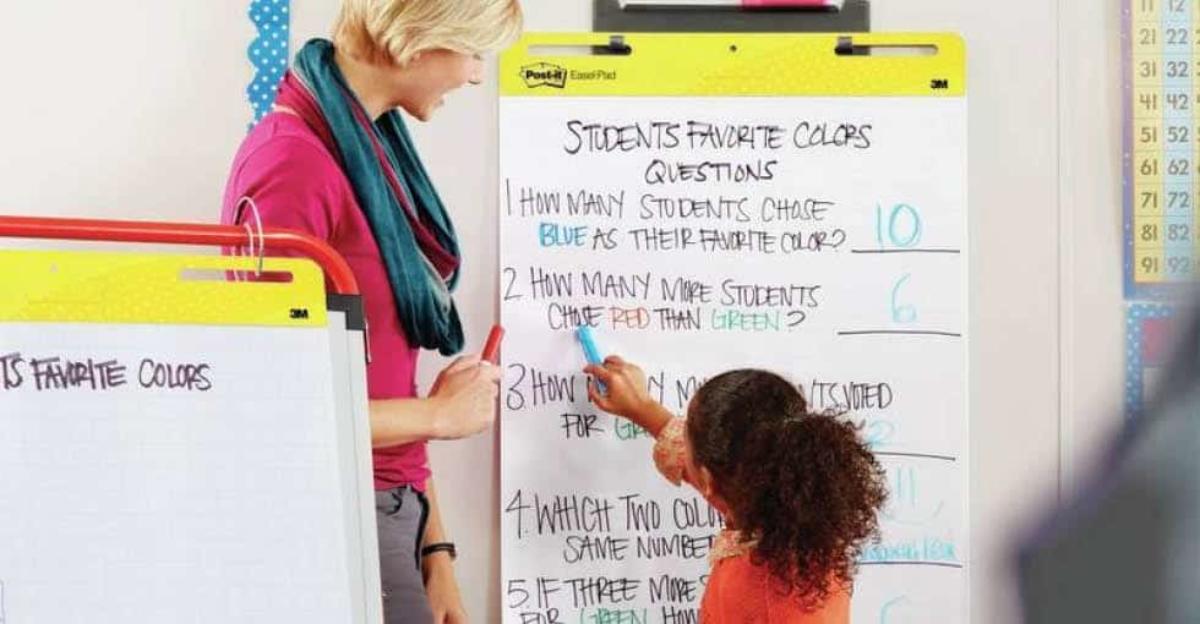At the beginning of the year, we know it’s time to stock up on classroom essentials that will make teaching easy and learning fun. Easel pads are one of those invaluable items that will do just that, and they are on almost every teacher’s supply list. They’re just so versatile. We’ve made a quick list of five great ways to use easel pads in an elementary classroom.
Interactive Writing
The teacher and the students share the marker, as they write a message on the easel. The students fill in the sounds that they know, while the teacher fills in other word parts. For instance, one Kindergarten student may be able to hear and write the “g” in the word “game,” while another may be able to add the “a,” and even a third adds the “m.” The teacher may then add the “e” and provide a quick “mini-lesson” on silent “e.”
Shared Writing
The teacher writes the message in shared writing, but it is created with the students under her guidance. The words in the message are written on the easel one at a time. Each time the teacher adds a new word, the message is re-read from the beginning by the whole class. The message becomes a familiar piece of print that hangs in the class for students to re-read.
Pave Maps
PAVE is a strategy for introducing new vocabulary words and stands for prediction, association, verification, and evaluation. Students can work together in a group using an easel pad to complete a PAVE map when given a new word. They first predict word meaning using context clues and record that on the easel pad. Next, they draw a picture of that. Then, they must verify the word’s meaning by writing the dictionary definition. Finally, they evaluate their original prediction.
Daily Routines and Information
Regular routines are key to great classroom management. Many teachers post items like bellwork, an agenda, a positive message, homework assignments, materials needed, etc. each day. Rather than taking up space on a white board or Projection screen, this information can be posted on an easel pad and stuck to a cabinet or wall, saving that white board for other instructional content.
Graphing/Taking Polls
Draw a simple x and y axis on the easel pad. Along the bottom list the items your “polling” your class on (e.g. – different flavors of ice cream if the poll is about favorite flavor). Allow students to write their response on a sticky note (e.g. strawberry, vanilla, etc). Students then place their sticky notes on the pad in a vertical line above the indicator for their flavor. The sticky notes create a bar graph on the easel pad.
With easel pads in a classroom, it’s easy for learning to be interactive for the students. It’s great that such a simple material can bring about such powerful learning opportunities for students. Increasing student engagement equals increasing student achievement!






Leave a Reply